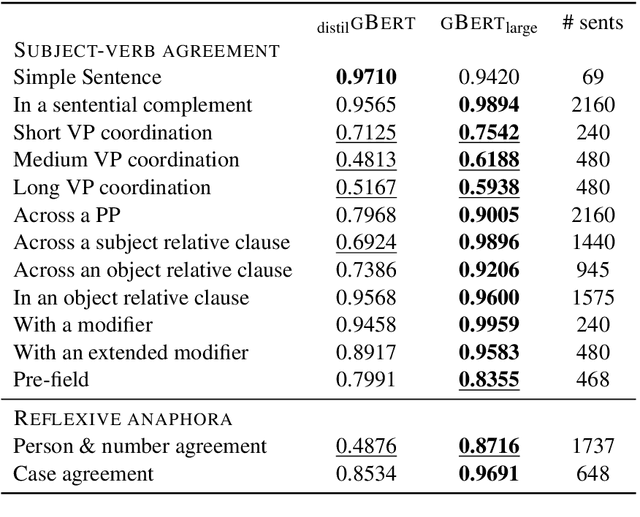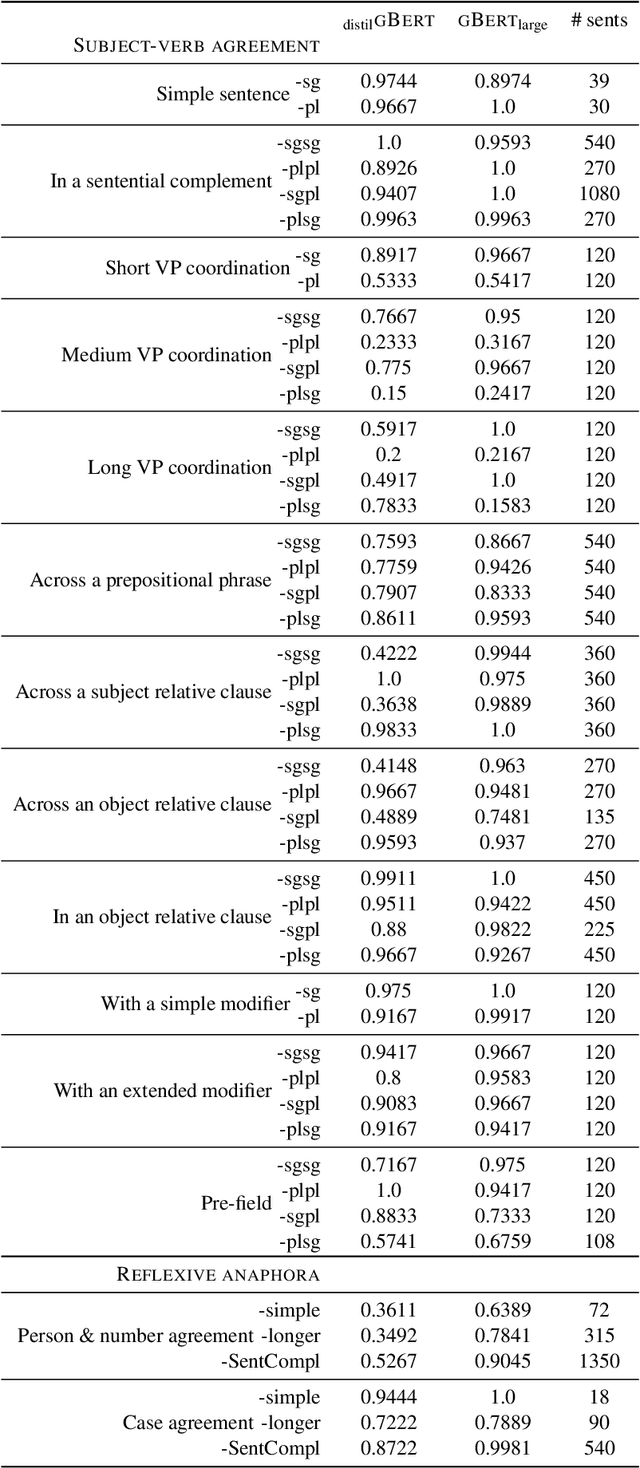Evaluating German Transformer Language Models with Syntactic Agreement Tests
Paper and Code
Jul 07, 2020

Pre-trained transformer language models (TLMs) have recently refashioned natural language processing (NLP): Most state-of-the-art NLP models now operate on top of TLMs to benefit from contextualization and knowledge induction. To explain their success, the scientific community conducted numerous analyses. Besides other methods, syntactic agreement tests were utilized to analyse TLMs. Most of the studies were conducted for the English language, however. In this work, we analyse German TLMs. To this end, we design numerous agreement tasks, some of which consider peculiarities of the German language. Our experimental results show that state-of-the-art German TLMs generally perform well on agreement tasks, but we also identify and discuss syntactic structures that push them to their limits.
 Add to Chrome
Add to Chrome Add to Firefox
Add to Firefox Add to Edge
Add to Edge